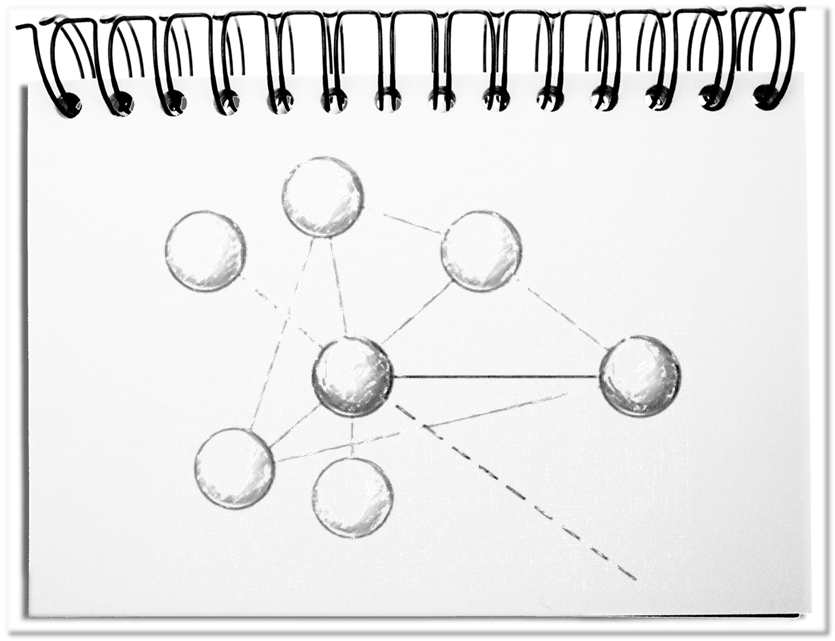With the new millennium, a new sphere of relationships to one another has emerged – the Internet. Thus, the material hurdles for contacts continued to decrease. Companies like Facebook & Co. create the bedrock for networking across national and geographic borders. On Facebook alone, over 2 billion users have registered. The social networks call users differently – friend, follower, contact, subscriber. The relationships are usually made by invitation and confirmation. Due to these new opportunities, it is helpful to realize what the ingredients of a network are.
In addition to the offerings of a network, its complexity results from the set of actors and the number of relationships.
Actor (Node)
The acting entity in a network is the actor, or node. On the one hand, these can be individuals and groups, or even automated actors in the form of IT programs. The effect of a network is created by the diversity of the actors that constitute the network. This system lives on the interests and the resulting solutions, decisions and implementations. In order to be able to participate, the parties involved must perceive their environment, integrate the observations into their thinking models, then exchange and enrich each other as well as act on the world with initiatives. The actors can be reduced to a few basic types.
- Reactive actors act in a situation instinctively and without thinking.
- Forward-thinking actors think through a situation and then follow prepared plans and intentions.
- Business actors mix spontaneous reaction with planned action.
- Prosaic actors additionally assess the situation and then act on business.
- Altruistic actors assess social compatibility and behave accordingly.
- Autonomous actors are software-based solutions that execute simple rules and plans.
When looking at a network, it is essential to have a list of all stakeholders and their expectations.
Relationship (Edge)
The connection between the actors is the relationship, or edge. It is used to exchange among the doers material and immaterial things, such as artefacts, data, information and knowledge, and to create results together. The strength of the relationship stems from mutual commitment, trust, reciprocal benefits, and time spent together. There are four different types of relationships.
- Supportive relationships exist when the actors are helpful, responsive and benevolent.
- Opposing relationships become visible when the participants are reluctant, dismissive and disapproving of each other.
- Indifferent relationships exist when the persons affected are not interested, unemotional and distant.
- No relationship means that people do not have contact with each other.
- Ambivalent relationships exist when the actors happen to switch back and forth between the previous ones.
The conscious classification of relationships enables selected control of the network.
Network itself
The sum of actors and relationships create a network or system. It has a purpose, a clear structure and certain procedures. In case of tree, ring or line structures, actors are connected in a row, one behind the other. Only the meshing makes the network – i.e. actors are connected to several actors. If a network exceeds a certain size, subnetworks or completely new networks evolve.
- The purpose of a network is described by stakeholder expectations, the derived strategy, and the long-term strengths, weaknesses, opportunities, and threats.
- The composition of the network is determined by the actors and relationships as well as the aspects of the governance, the distribution of power, the leadership and the internal and external image.
- The procedures of a network are determined by the cooperation, the social interactions among each other, the balanced give and take as well as the effects and their qualities that result.
The cohesion of the network offers all participants a great benefit.
Bottom line: The fabric that will dominate the business world in the future is the network – open, dynamic and complex. The difficulties in a VUCA world are the heavily to understand interactions between the components – the actors, relationships, and the resulting networks. It is no longer enough to build up internal organizational structures and processes. Skills are required to deal with the dynamics of overarching networks – holistic thinking, critical thinking, and change competence. For this purpose it is useful to gain as soon as possible an understanding of the ingredients of a network

